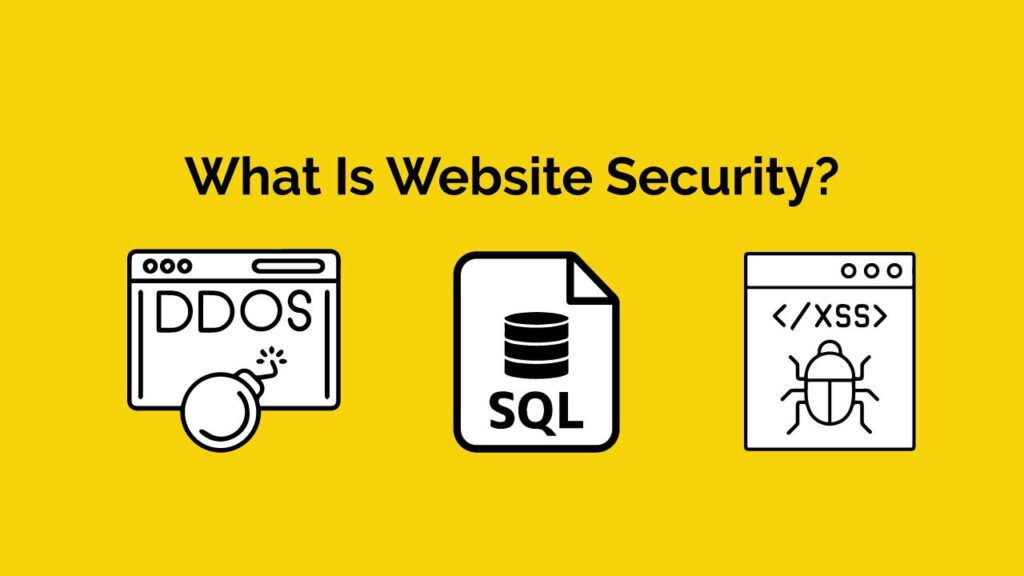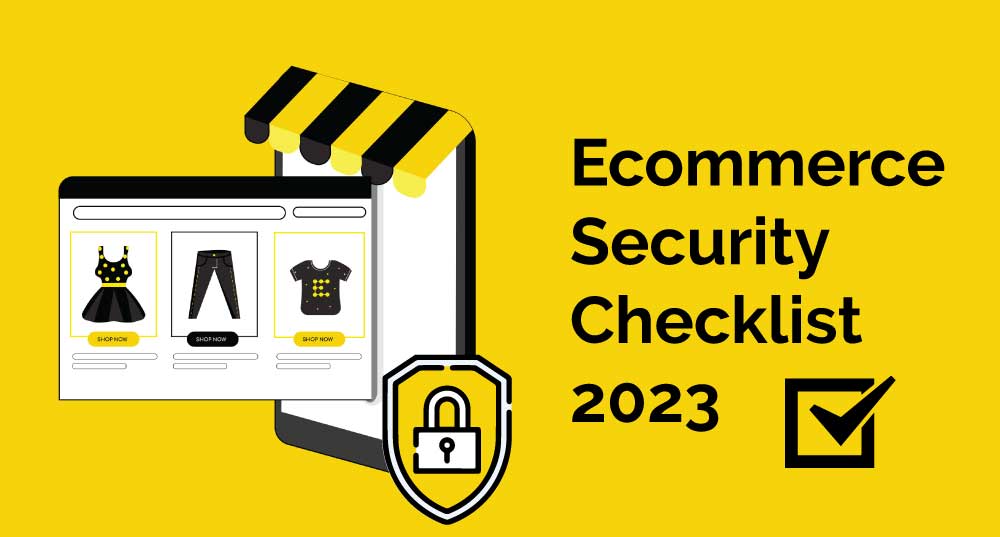For many businesses, security only becomes an issue when a problem arises. Whether you are a small business or a multi-billion-dollar corporation, security threats are issues for everyone with an eCommerce site.
When valuable personal data is involved, cybercriminals are attracted to every size of business. Online shops in particular are attractive given the information involved, including credit card and other payment details. Smaller businesses are often the most attractive targets because they are more likely to lack the security infrastructure to prevent or stop attacks.
Avoiding costly cyber attacks is not the only reason to be aware of security. Complying with data protection laws and regulations is also increasingly important for companies as rules evolve. Read on to understand your security requirements to ensure your e-commerce sites adapt and conform in the most efficient and user-friendly way possible.

What is website security?
Website security, especially in an eCommerce environment, involves protecting your site from cyber attacks. These often involve attempts to steal data and content, particularly personal information. This data and content are then used for cybercriminals’ use or sold to third parties. Some attacks may also involve requests for money to end the attack. Hackers may also target a site to install malware on visitors’ devices, impact a company’s reputation or SEO rankings, gain access to restricted areas of a website, or use a site to send spam.
Common security breaches include:
- Distributed denial of service (DDoS) attack, where an attempt is made to overload a server with traffic to compromise functionality or take a site offline.
- Ransomware, is malicious software that encrypts the site’s files to ask for a ransom to decrypt them.
- Search query language (SQL) injection, where malicious code is inserted to gain access to a database where sensitive information like payment and password details are stored.
- Cross-site scripting (XSS), where malicious JavaScript code is inserted to view customers’ credentials and cookies or to rewrite a page.
- Credential reuse, where user information from another site is used on your site by exploiting users’ reused passwords.
- Payment fraud, where illegally obtained payment details (for example, stolen passwords or details obtained through phishing schemes) like credit card numbers are used for purchase.

Impacts of cyber attacks
Cyber threats include phishing, compromised business emails, a vulnerability in third-party software, stolen or compromised credentials and malicious insiders. An attack can result in lost sales and customers. They also result in website downtime, which also impacts a company’s bottom line.
In 2022, 83% of companies experienced at least one data breach according to IBM’s 2022 Data Breach Report. The same report found that the average cost of a data breach was $9.44 million in the United States, with the global average at $4.35 million. Plus, it takes an average of about nine months to identify and contain a breach.
There is also a reputational risk when you suffer a security breach, especially if large amounts of personal data are compromised. One study found that a company loses up to 30% of its value when customer trust is lost.
Security checklist to protect your website
Ensuring your e-commerce site is secure is an ongoing process. Web security is evolving, so businesses need to ensure their website offers the best security as threats and requirements change. Here are some important steps to make your site secure.
Choose the right eCommerce solution
eCommerce solutions offer different services and features, and not all of them have strong infrastructure or security expertise. Some providers, for example, offer threat assessments and modelling as well as tests to check code and penetration to help prevent cyber attacks. Look for solutions that offer managed and 24/7 security support.
Effectively control admin rights
The number of people with admin rights to your site will change as your company grows. As employees come and go, the people who have access to your site will also evolve. It is important to keep track of admin rights and award them with caution. Remove permissions as soon as an employee departs and avoid giving access to anyone who does not need it.
Get an SSL certificate
Secure Sockets Layer (SSL) is encryption that protects data. For example, payment information is encrypted to make it difficult for data to be intercepted. SSL certificates provide improved security by encrypting data communication between servers and browsers. Any site with an SSL certificate is displayed as ‘https’, giving users greater confidence that their data will be processed securely.
Responsibly manage user data
For businesses, data is an important tool to inform their products and services. It is tempting to collect and store as much information as possible. You should only collect essential information. Anything more than what you need to complete, for example, a purchase on your site should not be collected. The payment information should also never be stored on servers unless it is for recurring payments. Also, give users the option to easily and quickly delete their data.
Encourage strong passwords
Many of us are guilty of choosing simple passwords or reusing them across different sites. You can encourage online security by reminding users to pick a strong password and why this is important. Share information on criteria for a strong password, such as a mix of letters, numbers, symbols, and capitalized letters. Internally, it is also important to create complex and unique passwords for your accounts.
Enable two-factor authentication
Two-factor authentication (2FA) helps increase security by reducing the chances of someone guessing a password. It typically requires a user to verify a log-in or changes to their account by entering a code provided via email or text message. Giving this option to users and using it for your accounts is a simple way to reduce unauthorized access.
Audit third-party apps and plugins
Apps and plugins offer varying degrees of security, especially when it comes to storing data. It is important to regularly check whether you are using third-party apps and plugins. If you do not need one, remove it. This will help limit the number of third parties with access to your data and site.
Add a registry lock
A registry lock offers protection against domain hijacking. It blocks unauthorized changes by adding an extra layer with an offline verification process. This can be used to, for example, delete or transfer data.
Create backups
If your site is hacked or there is another security breach, having a backup of your site will help minimize disruption. A backup can be used to restore data and settings. This can be done without using the corrupted code since the backup is independent of the compromised site.
Create a secure online presence
Cyber risks are increasing. Reducing cyber risks helps save businesses time and money. Being proactive in securing your site is essential in helping to stop these and other types of threats to your business. Ensure that you follow the above checklist to ensure that your E-commerce website is safe from attacks in 2023 and beyond.

Author Bio:
Dylan Thebault is an SEO Executive at Digital Funnel, an SEO agency that provides services to increase website organic traffic and revenue.

